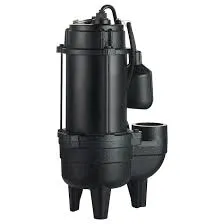Yiddish
- Afrikaans
- Albanian
- Amharic
- Arabic
- Armenian
- Azerbaijani
- Basque
- Belarusian
- Bengali
- Bosnian
- Bulgarian
- Catalan
- Cebuano
- Corsican
- Croatian
- Czech
- Danish
- Dutch
- English
- Esperanto
- Estonian
- Finnish
- French
- Frisian
- Galician
- Georgian
- German
- Greek
- Gujarati
- Haitian Creole
- hausa
- hawaiian
- Hebrew
- Hindi
- Miao
- Hungarian
- Icelandic
- igbo
- Indonesian
- irish
- Italian
- Japanese
- Javanese
- Kannada
- kazakh
- Khmer
- Rwandese
- Korean
- Kurdish
- Kyrgyz
- Lao
- Latin
- Latvian
- Lithuanian
- Luxembourgish
- Macedonian
- Malgashi
- Malay
- Malayalam
- Maltese
- Maori
- Marathi
- Mongolian
- Myanmar
- Nepali
- Norwegian
- Norwegian
- Occitan
- Pashto
- Persian
- Polish
- Portuguese
- Punjabi
- Romanian
- Russian
- Samoan
- Scottish Gaelic
- Serbian
- Sesotho
- Shona
- Sindhi
- Sinhala
- Slovak
- Slovenian
- Somali
- Spanish
- Sundanese
- Swahili
- Swedish
- Tagalog
- Tajik
- Tamil
- Tatar
- Telugu
- Thai
- Turkish
- Turkmen
- Ukrainian
- Urdu
- Uighur
- Uzbek
- Vietnamese
- Welsh
- Bantu
- Yiddish
- Yoruba
- Zulu
Telephone: +86 13120555503
Email: frank@cypump.com
Oct . 08, 2024 04:50 Back to list
submersible mixed flow pump
Understanding Submersible Mixed Flow Pumps Efficiency and Applications
Submersible mixed flow pumps are specialized types of pumps designed to operate underwater, typically for applications involving the movement of large volumes of water. Characterized by their unique impeller design, these pumps merge the principles of both centrifugal and axial flow pumps, making them exceptionally versatile and efficient in various settings.
One of the primary distinctions of submersible mixed flow pumps is their impeller design, which facilitates the movement of fluid not just in a radial direction (like traditional centrifugal pumps) but also in a directional manner, similar to axial flow pumps. This dual-action allows them to handle large volumes of water while maintaining a high head (the height to which a pump can raise water). The combination of these flow characteristics enables submersible mixed flow pumps to provide excellent performance in applications that involve both deep water and variable flow rates.
These pumps are typically employed in situations where traditional pumps cannot operate efficiently due to their location. For example, submersible mixed flow pumps are commonly used in municipal water systems, irrigation projects, and industrial processes where water must be extracted from wells, rivers, or lakes. Their ability to work submerged, alongside being highly efficient, reduces the need for complex suction lines and other equipment typically required in conventional pumping systems.
One of the significant advantages of submersible mixed flow pumps is their energy efficiency
. By operating underwater, these pumps can leverage gravity to assist in fluid movement, significantly reducing the energy required for operation. This energy efficiency not only reduces operating costs but also has a positive environmental impact, as less electricity consumption leads to lower carbon emissions.submersible mixed flow pump

Another noteworthy feature of these pumps is their robustness and durability. Designed to withstand harsh environments, submersible mixed flow pumps are usually built from high-quality materials that resist corrosion and wear, ensuring a long service life. This durability is particularly crucial in applications involving sewage and wastewater, where pumps are often subject to abrasive particles and chemicals.
Moreover, maintenance of submersible mixed flow pumps tends to be less frequent than that of surface pumps, which can be a major advantage in remote or hard-to-reach areas. Many models are designed for easy installation and removal, allowing for quicker maintenance procedures when needed.
In terms of the selection process, it is crucial for engineers and decision-makers to consider specific factors including flow rate requirements, total dynamic head, and the characteristics of the fluid being pumped. Proper sizing and selection of a submersible mixed flow pump can lead to significant improvements in operational efficiency and longevity.
In conclusion, submersible mixed flow pumps represent a critical advancement in pumping technology, offering versatility, efficiency, and reliability in a wide range of applications. Their ability to operate submerged simplifies logistics, reduces energy consumption, and ensures effective water movement, making them integral to modern water management systems. As industries continue to seek sustainable and effective solutions, the demand for such pumps is likely to grow, further emphasizing their importance in engineering and environmental applications.
-
Horizontal Split Case Pump with GPT-4 Turbo | High Efficiency
NewsAug.01,2025
-
ISG Series Pipeline Pump - Chi Yuan Pumps | High Efficiency, Durable Design
NewsAug.01,2025
-
Advanced Flue Gas Desulfurization Pump with GPT-4 Turbo | Durable & Efficient
NewsJul.31,2025
-
ISG Series Vertical Pipeline Pump - Chi Yuan Pumps | Advanced Hydraulic Design&Durable Construction
NewsJul.31,2025
-
ISG Series Vertical Pipeline Pump - Chi Yuan Pumps | Energy Efficient & Low Noise
NewsJul.31,2025
-
pipeline pump - Chi Yuan Pumps Co., LTD.|High Efficiency&Low Noise
NewsJul.31,2025










